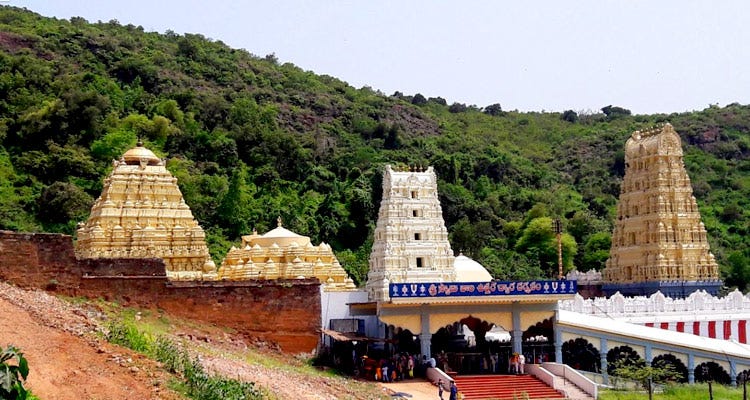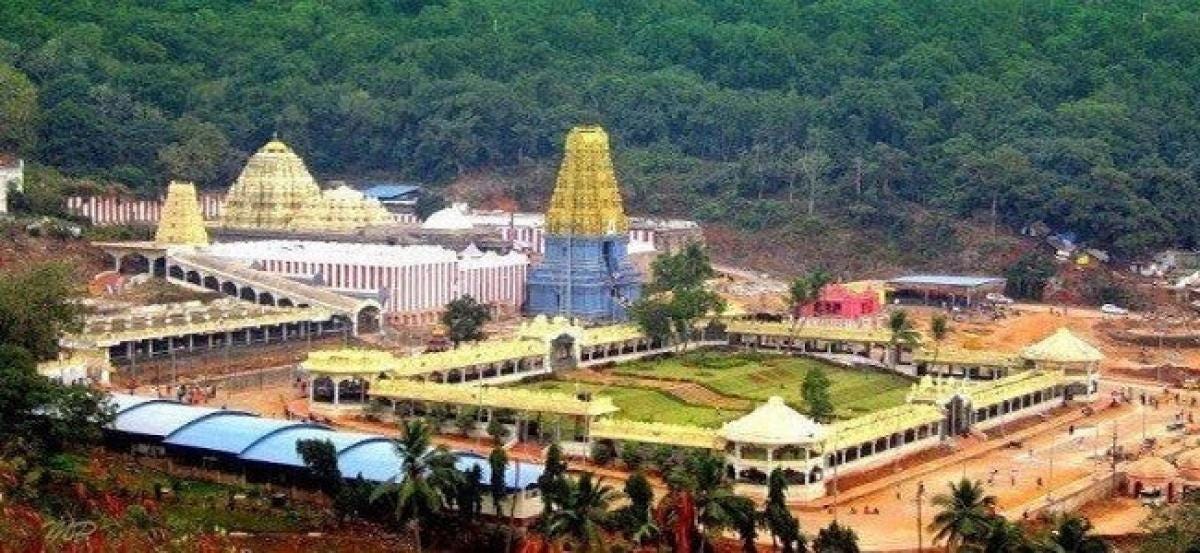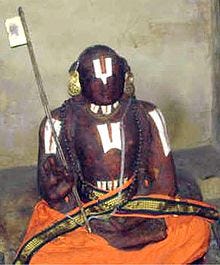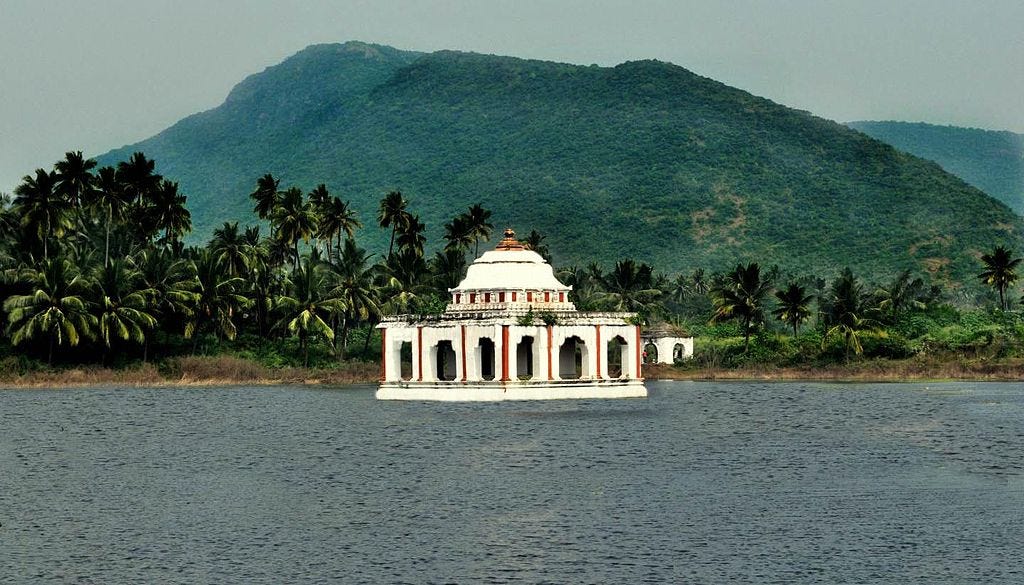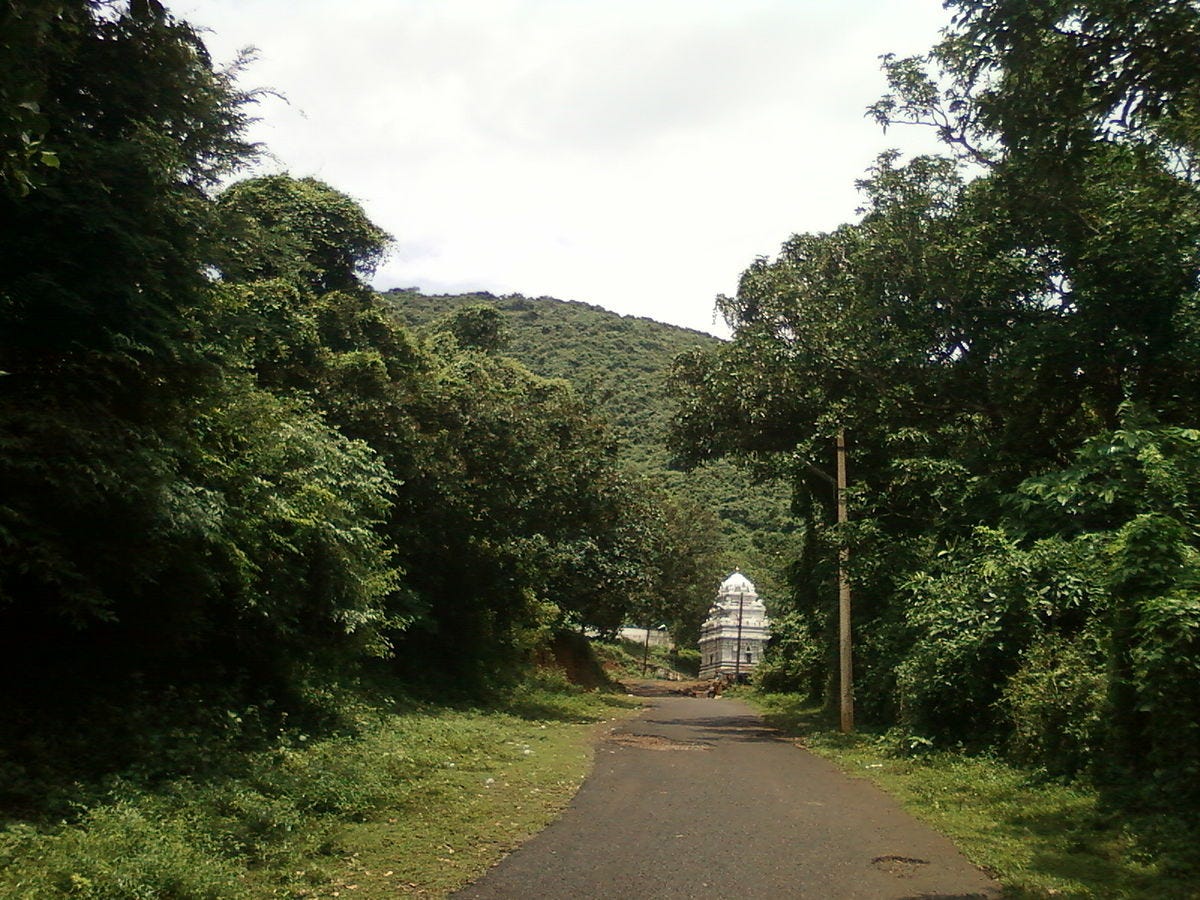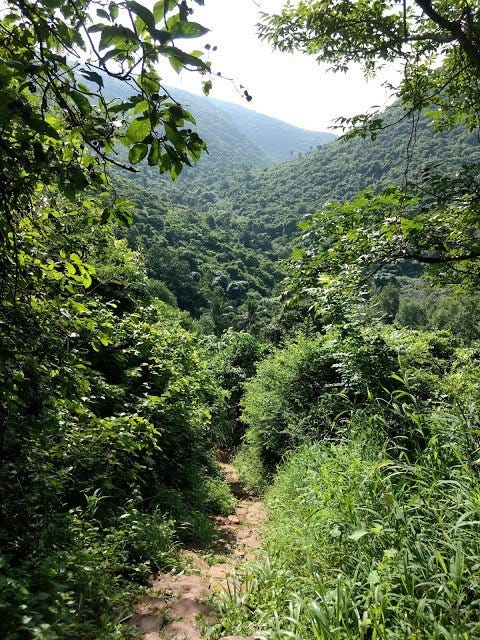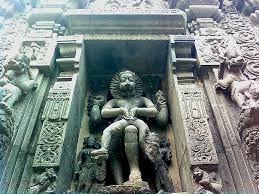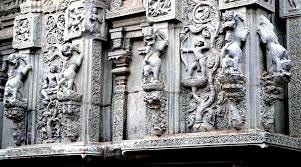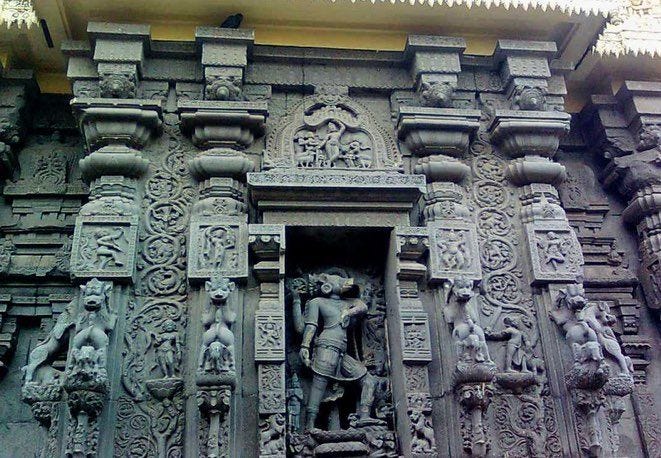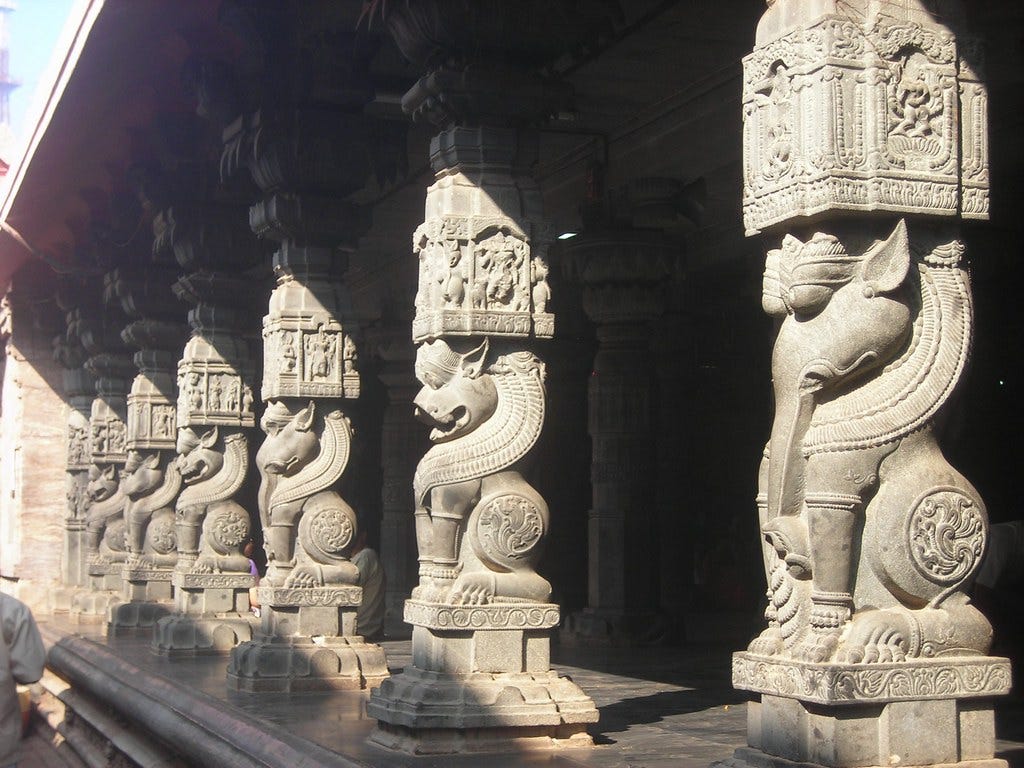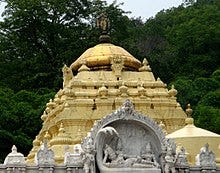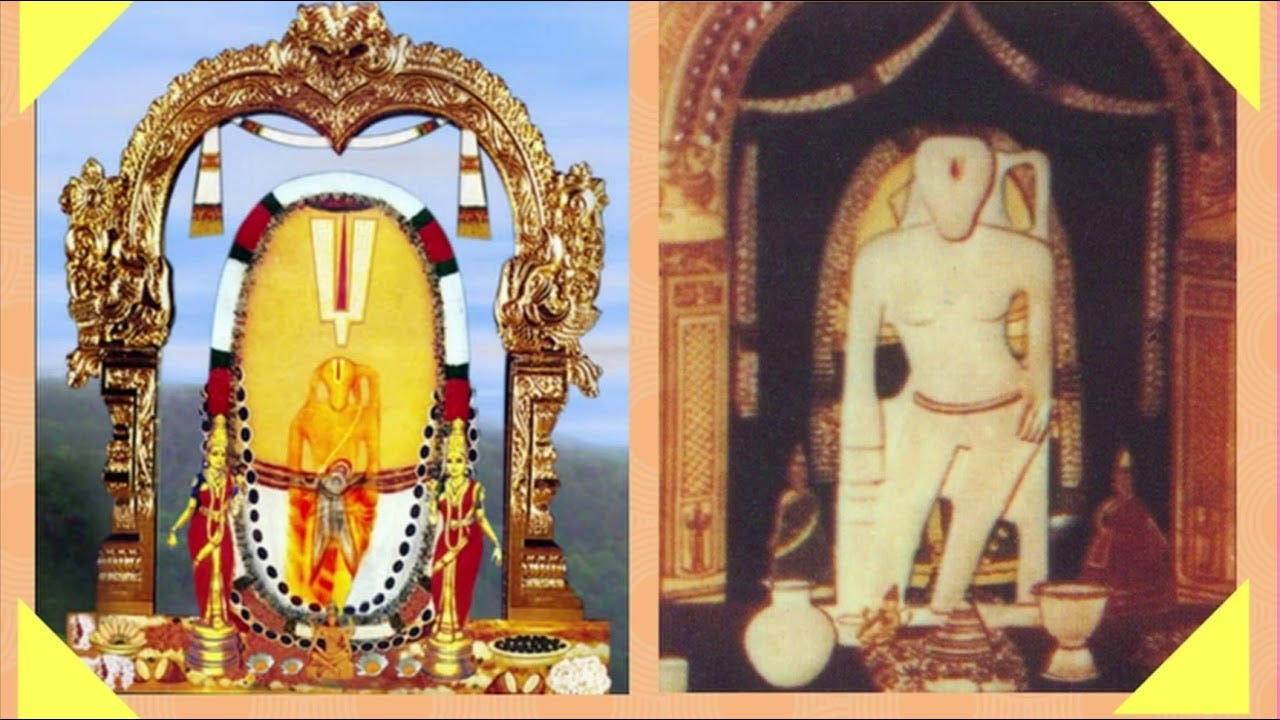Simhachalam, one of the most well known of the 32 Narasimha Kshetras in Andhra Pradesh, where Vishnu is worshipped as Varaha Narasimha, and is considered an important center of Vaishnavism in the medieval era. Located just near to the city of Vishakapatnam on a hill, 1500 m above sea level, surrounded by dense forests, the picturesque surroundings lend it even more sanctity.
As per the Sthala Puranam, Prahlada prayed to Vishnu to assume the forms of both Varaha and Narasimha together. The place was named as Simhachalam, meaning Hill of the Lion, and the deity is also called as Simhadri Appanna affectionately by locals. Another of the sthala puranas state that the main murthy, was discovered by Pururavas and Urvashi, and they were instructed to cover it in Chandana( Sandalwood paste) throughout the year except on Akshaya Trithiya.
The renowned Vaishnava saint Ramanujacharya, visited Simhachalam and Srikurmam during the 11th century, and also laid down the rituals, rules of worship based on Satvata Samhita, one of the 108 texts of the Pancharatra Agama, that are followed even now.
The temple dates from the Chola era, of the 11th century CE with inscriptions by Kullotunga I here. The original structure was a more simple temple, the current layout and architecture was during the reign of Narasimha Deva I of the Eastern Ganga dynasty , who added more ornate sculptures, prakarams, as well as the smaller shrines of Vaikunthanatha, Yagnavaraha, and Madhavadevara.
The Reddy Rajulu too contributed substantially to Simhachalam,followed by the Gajapatis, with significant contributions from Kapilendradeva, Purushottama Deva and Prataprudra Deva. Sri Krishna Deva Raya visited Simhachalam temple during his campaign in Kalinga, erected a Jayastambha to commemorate his victory over the Gajapatis here, and also gifted ornaments to the deity. With the fall of the Vijayanagara Empire and decline of the Gajapatis, the Simhachalam temple went into decline for a long time. In 1949 it was taken over by the State Govt of AP, and currently the Pusapati Gajapatis of Vizianagaram are the hereditary trustees.
The temple can be reached via steps, through the Bhairava Dwaram at the the foothills, as well as roads leading all the way up. There are two temple tanks at Simhachalam, one on the top called the Swami Pushkarni, another at the foothills called the Varaha Pushkarni or Gangadhara. And three natural springs at Madhavadhara, Chakradhara, Akashadhara.
There is also a nice trek from Madhavadhara to Simhachalam through forests, which you can undertake, where you get some great views, though be careful of the leopards lurking around.
The temple's architecture is a mix of Kalinga, Chola, Chalukyan styles, and unlike other temples, it faces west. There is a 5 tier rajagopuram, on the west, the mandapam with 96 pillars has many carvings of Vishnu, Lakshmi, the Azhawars. The temple's sanctum sanctorum is cubical shaped, with sculptures in Hoysala style, and a gold plated dome capping the Vimana. And a magnificient sculpture of Narasimha killing Hiranyakasipu.
The north west corner of Simhachalam temple has Jyestha, Vaishaka mandapams used for special occasions, apart from a 16 pillar Natya mandapa, and a 32 pillar Kalyana mandapam that has the 32 manifestations of Narasimha carved on them. The moolvirat of Varaha Narasimha stands in a tribhanga posture, flanked by his consorts Sridevi and Bhudevi. The Chandana covering the deity is bought from Srivilliputhur in Tamil Nadu, and it's believed this protects the devotees from the fierce intensity of the radiation.
Only 4 main ornaments are used in the temple- A thirumanam made of diamonds and rubies, a 100 tola gold bracelet, a golden crown and an emerald chain. There are sub shrines dedicated to Andal, Lakshmi and the Azhawars. Shiva in the form of Tripurantaka is the Kshetrapalaka of Simhachalam, and there is a temple dedicated to Bhairava at the foothills, and many devotees first visit this before visiting the main temple.
One of the important festivals in Simhachalam temple is Chandanotsavam, when the Chandana covering the moola virat is removed on Akshaya Trithiya day, during which devotees can see the Nija Rupa of the deity for 12 hours, that draws large crowds. Basically the Chandana is applied on the deity 4 times a year on Akshaya Trithiya, and Vaishaka, Jyeshta, Ashadha Pournami. The paste is removed in early morning at 4 and in the evening, Chandanabhishekam is performed.
Apart from the Chandanotsavam, the other major festivals at Simhachalam are the Kalyanotsavam, Narasimha Jayanti, Karthika Deepavali, Krishna Janmasthami, Kamadahana and Navaratri. After Tirupati, Simhachalam is the second richest temple in Andhra Pradesh, and the most prominent of the 32 Narasimha Kshetras. The temple was regarded as one of the major Vaishnava centers during the medieval ages.
The famous Telugu poet Krishnamacharyulu wrote many devotional vachanas in praise of Varaha Narasimha called Simhagiri Vachanas, while Sri Krishnadeva Raya mentioned about his visit here in his epic Amuktamalyada.


